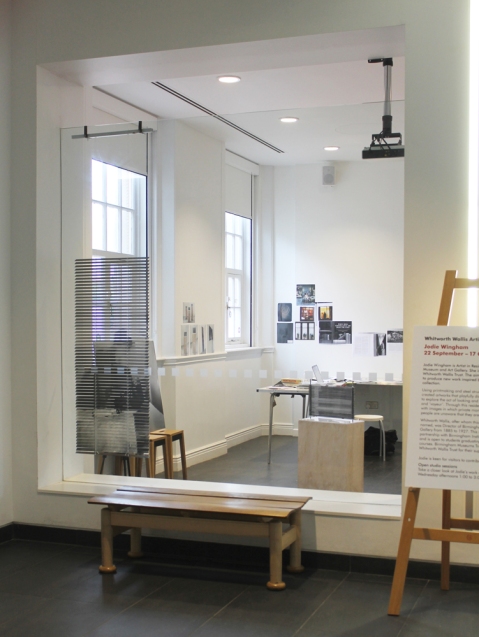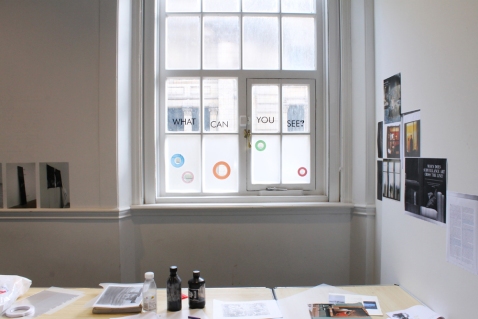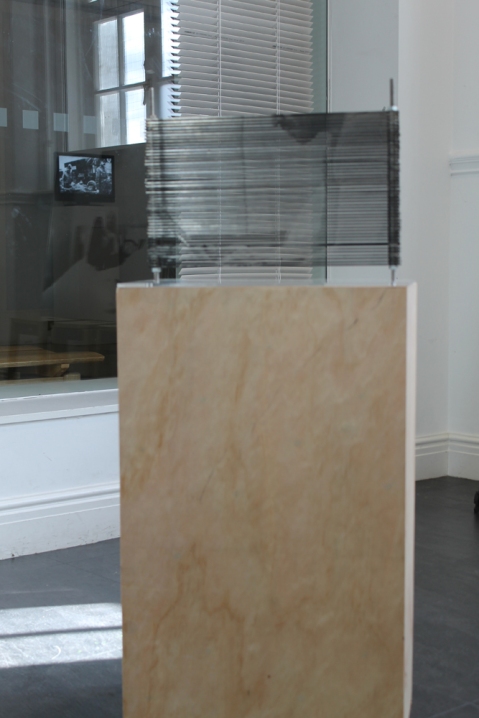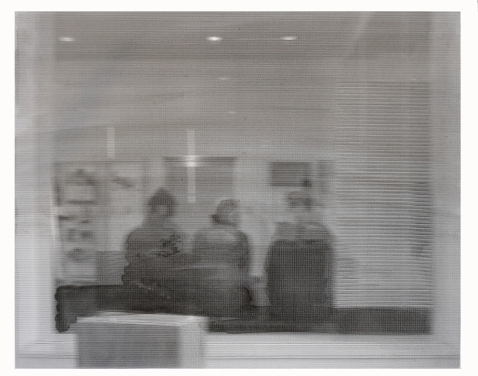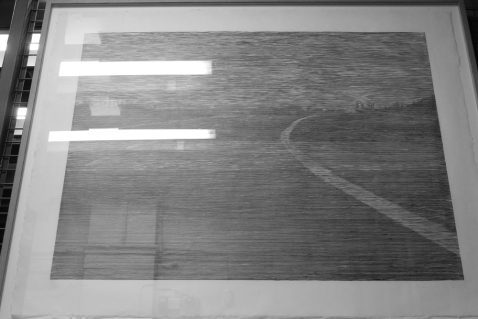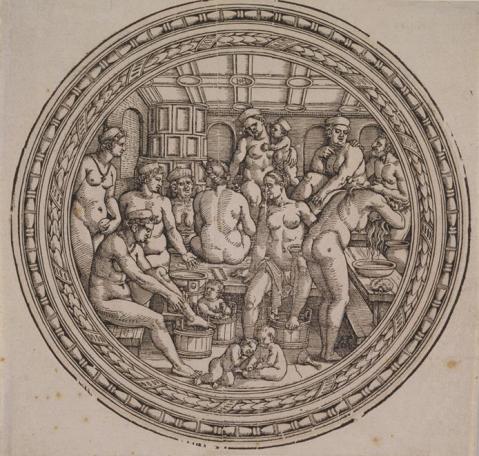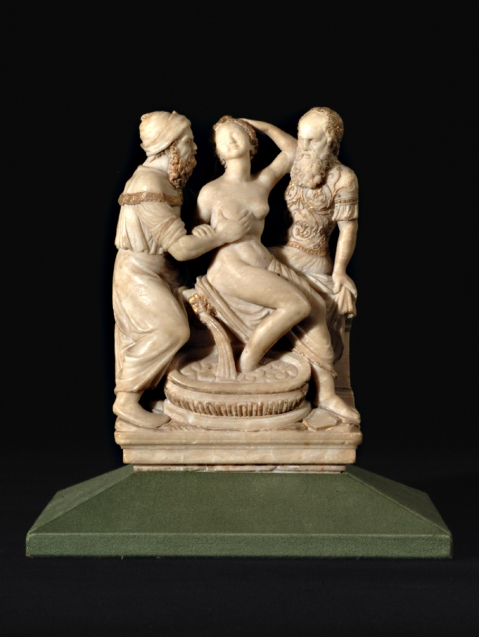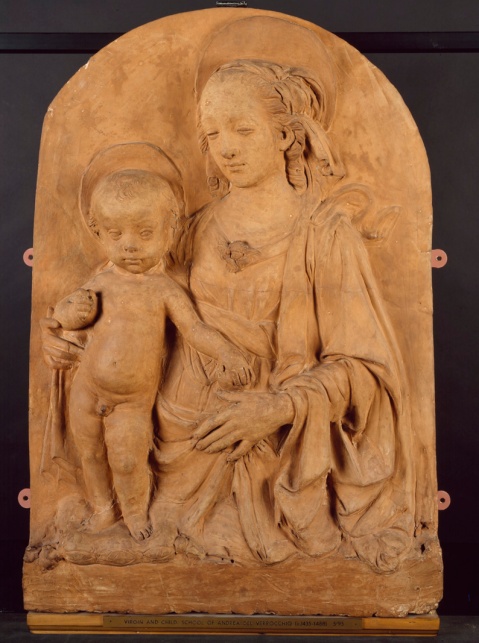Artist in Residence Jodie Wingham – Week One
It’s been a busy first week as Whitworth Wallis Artist in Residence at Birmingham Museum and Art Gallery, I’ve been moving into my studio, viewing the collections and meeting many members of staff and visitors. My studio is situated in the activity zone on level two, the space itself really suits my practice of observing others although, with the large glass wall I can now be easily observed too sometimes feeling like an artwork myself.
For the next four weeks I am going to be researching, gathering images and experimenting with ideas to make a new piece of work inspired by the collections held at the Museum. I have already had the chance to engage with the vast collection of prints, drawings and paintings held at the Museum and can’t wait for another visit.
My work focuses on the act looking, I like to make pieces that question the viewers participation in this act of observing others becoming aware of our own nosiness when it comes to viewing what people are doing. I stage photographs of people within interior spaces carrying out their everyday actions and turn these into screen prints upon sculptural steel structures that playfully distort the image further making the viewer work to see what is happening.
During the residency I am keen to look at how people interact with the artwork on display as well as each other within the gallery and how they engage in the act of looking. I have been working with some images taken from inside my studio of visitors as they walk or sit outside the glass wall. Here are two quick pieces (see images above) combining digital prints, ink and pencil, can you see the figures?
The images are formed of many horizontal lines similar to contemporary printmaker Christiane Baumgartner’s woodcuts entitled Asphalt 1 and 2, which are currently held in the Museum’s collection. I went to see these pieces with Modern and Contemporary Art Curator Lisa Beauchamp, it was great to get up close to see the time consuming technique which Baumgartner uses to capture quite mundane landscapes.
I have a keen interest in printmaking of all kinds always wanting to learn more and try out new things, this week I have visited the huge print and drawing collection at the Museum with curator of Fine Art Victoria Osbourne. One of the pieces in the collection that struck me was a wood cut by Hans Sebald Beham entitled The Woman’s Bath (1530). The piece shows the private act of women bathing being captured by the artist for the viewer to enjoy, what I liked was the circular shape of the print which makes you want to look closer drawing in your attention.
Next week I will be spending more time researching drawings from the collection that have a narrative, I am interested in those moments where an event between people has been captured by the artist, leaving the viewer to guess what has happened or possibly what will happen next.
My studio is open to the public every Wednesday 1-3pm, feel free to pop in and see what I have been up to. This will also be posted on the blog at the end of every week.
On the 4th of October I will be holding a free print workshop called ‘The Big Print’ between 11am-1pm and 2-4pm. This is part of Fun Palaces, a scheme of cultural events for all to join in across Birmingham – participating venues include the Birmingham Museum and Art Gallery, the REP and The Pen Museum. We will be trying a variety of prints that you can take away on the day, open for all ages. More information can be found on the Birmingham Museum and Art Gallery website: http://www.bmag.org.uk/events?id=3422
Jodie Wingham,
Whitworth Wallis Artist in Residence
Grayson Perry tapestries arrive
Grayson Perry’s tapestry series ‘The Vanity of Small Differences’ arrived from Manchester Art Gallery on Tuesday. The only way to move the very long crates into the museum was by carrying them in through the front doors and up the stairs. Hard work as you can see from the pictures! They’re all safely here now and we can’t wait to hang the tapestries with the Arts Council Collection next week.
To find out more about ‘The Vanity of Small Differences’ tapestries you can also download the Grayson Perry app (£1.99 from the app store). This lets you see the tapestries up-close and listen to Grayson Perry talking about each one, exploring the symbolism and making of the works. It’s a fascinating insight into the artist’s thinking.
We’ll also be installing the Grayson Perry pot in our collection, ‘Who Am I?’, and the fabrics that he designed for Liberty’s. Both the pot and the fabric design are typical of Perry’s work, having a deceptively attractive appearance which contrasts with their often subversive or challenging subject matter.
‘Grayson Perry: The Vanity of Small Differences’ opens on 14th February and is on until 11th May in gallery 20 at Birmingham Museum and Art Gallery. The exhibition is free to visit, for more information visit: http://www.bmag.org.uk/events?id=3073
Katie Hall,
Exhibitions Officer
Gallery 27 – 14th to 16th century European art
Good things come in small packages. Gallery 27 may be one of our smallest gallery spaces, but the new display of 14th to 16th century European art contains some gems which are worth spending time with.
One half of the room explores the way Christian art has used women to represent extremes of good and evil. A bronze sculpture shows Eve, who took an apple from the forbidden tree and caused humanity’s expulsion from Paradise. In contrast, Suzannah was a symbol of virtue because she refused to give in to the advances of two men who interrupted her bath.
The Virgin Mary, the ultimate example of female purity, is depicted with simple realism in Verrochio’s terracotta panel. This panel was made in the same workshop in which Leonardo da Vinci receiving his training as a young apprentice.
The other half of the room brings together examples of the technical skill and creativity displayed by the artists of this period. The tiny panel by Simone Martini is particularly moving: it shows a saint grieving over the dead Christ. The panel showing Christ no longer exists so we have to imagine the object of the man’s grief.
One of my favourite items is the painting of the nativity by an unknown Flemish artist known as the ‘Master of the Prado Adoration’. This miraculous scene is set in surroundings which would have been entirely familiar to a 14th century audience. The stable and Flemish townscape in the background would have created the impression that Christ was being born in the ‘here and now’. Joseph seems particularly real to me – the kind of elderly man you could meet on the bus.
Henrietta Lockhart,
Curator of History

